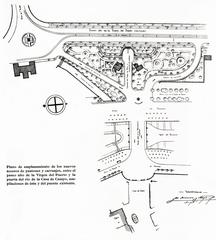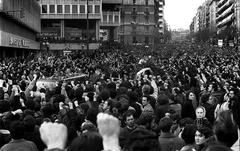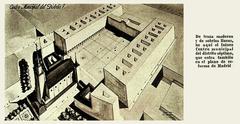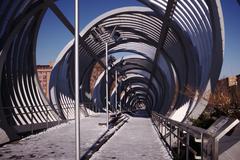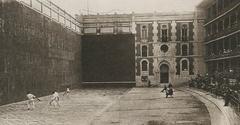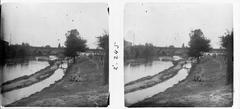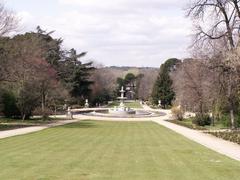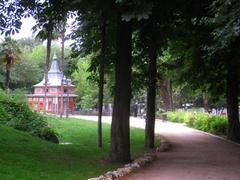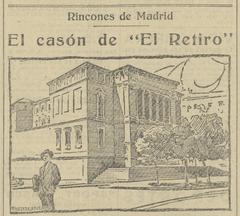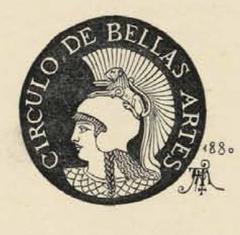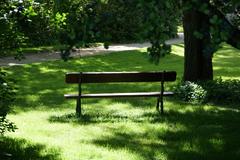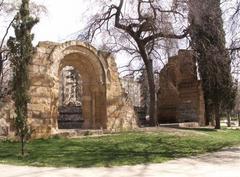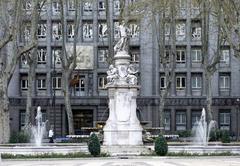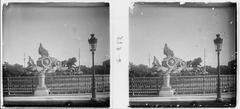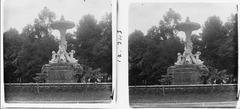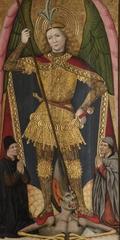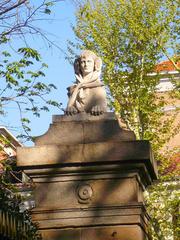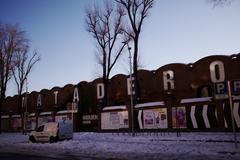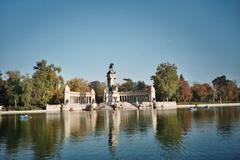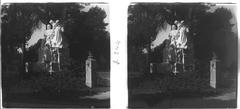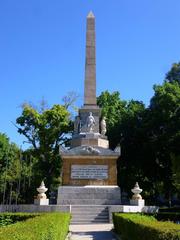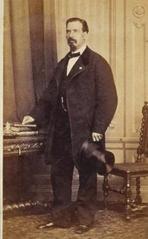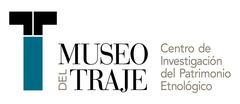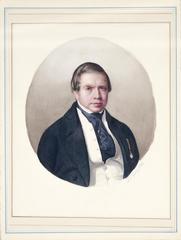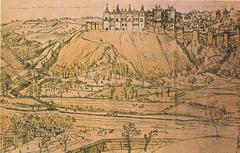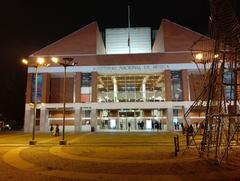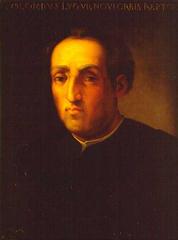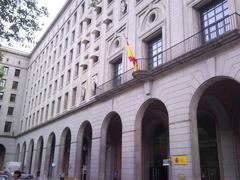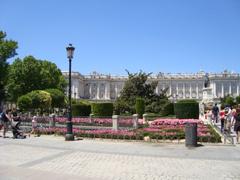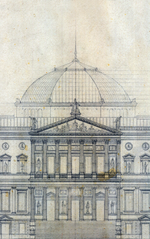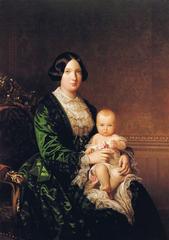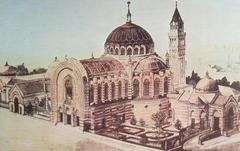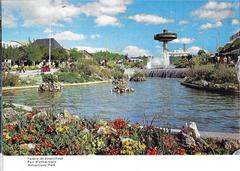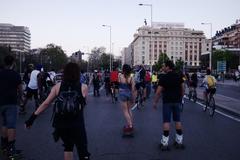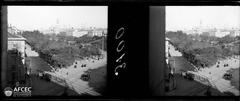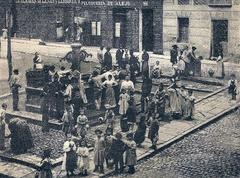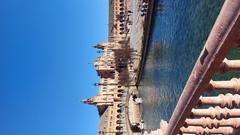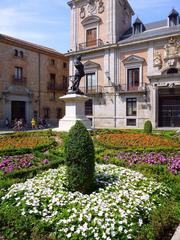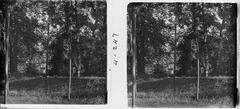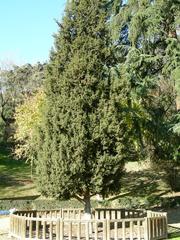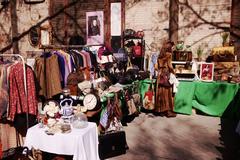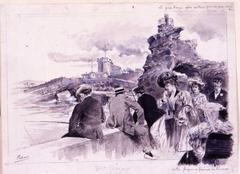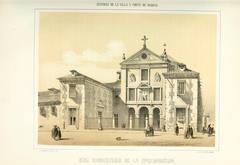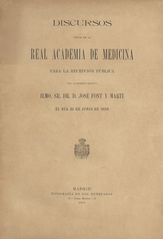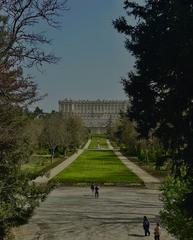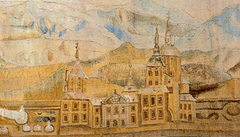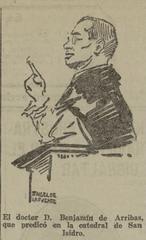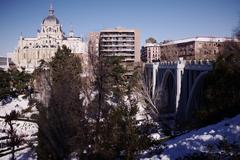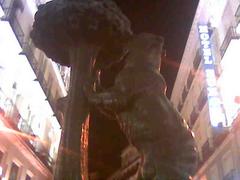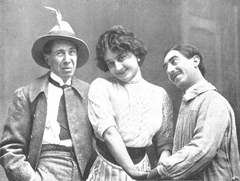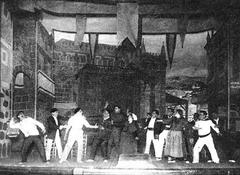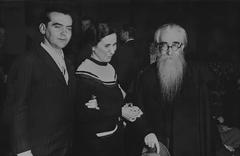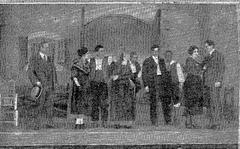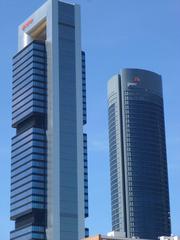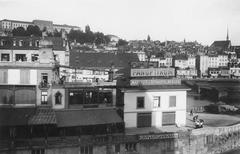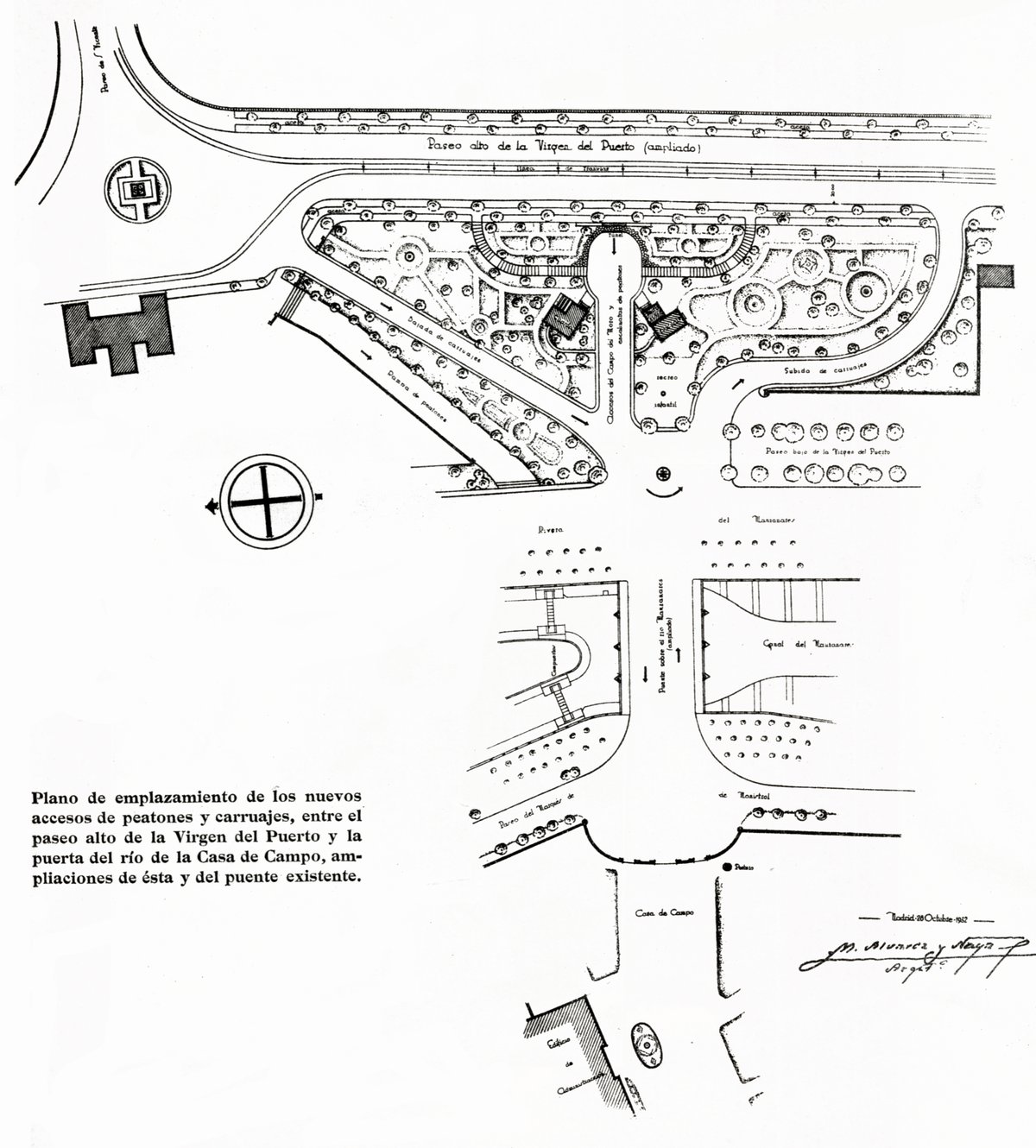
Comprehensive Guide to Visiting Puente del Rey, Madrid, Spain
Date: 18/07/2024
Introduction
Puente del Rey, or the King’s Bridge, stands as a historical and cultural landmark in Madrid, Spain. This neoclassical bridge, commissioned by King Ferdinand VII and completed in 1829, serves as a testament to Madrid’s rich heritage and architectural prowess. Originally constructed to facilitate the royal family’s movements between the Royal Palace and the Casa de Campo, Puente del Rey has evolved into a vibrant cultural hub and a vital pedestrian and vehicular crossing over the Manzanares River (Madrid Tourism).
The bridge’s architectural design, characterized by its elegant semi-circular arches, embodies the neoclassical style prevalent in the early 19th century. Its robust construction has allowed it to withstand the test of time, including its strategic use during the Spanish Civil War. Today, Puente del Rey is not only a symbol of Madrid’s royal past but also a cornerstone of the city’s modern urban landscape, seamlessly integrating historical preservation with contemporary infrastructure (Madrid Destino).
Visitors to Puente del Rey can enjoy scenic views of the Manzanares River and access nearby attractions such as the Madrid Río park, Casa de Campo, and the Royal Palace. The bridge is accessible 24/7, offering a picturesque route for pedestrians and cyclists. Guided tours provide deeper insights into its historical context and architectural features, making it a must-visit for history enthusiasts and tourists alike (Madrid Río).
Table of Contents
- Introduction
- History and Architectural Features
- Restoration and Preservation
- Visitor Information
- Cultural Impact
- Modern-Day Significance
- Nearby Attractions
- Dining Options
- Conclusion
- FAQ
History and Architectural Features
Historical Background
The Puente del Rey, or ‘King’s Bridge,’ is a significant historical structure in Madrid, Spain. Constructed in the early 19th century, the bridge was commissioned by King Ferdinand VII to facilitate access to the Casa de Campo, a vast royal hunting estate that was later converted into a public park. The bridge’s construction began in 1816 and was completed in 1829, reflecting the neoclassical architectural style prevalent during that period.
Architectural Design
Neoclassical Influence
The Puente del Rey is a quintessential example of neoclassical architecture, characterized by its symmetry, simplicity, and grandeur. The bridge features a series of semi-circular arches, a hallmark of neoclassical design. These arches not only provide structural integrity but also add to the aesthetic appeal of the bridge. The use of stone as the primary material further enhances its durability and timeless beauty.
Structural Elements
The bridge spans the Manzanares River, connecting the city of Madrid with the Casa de Campo. It consists of five main arches, each supported by robust piers. The central arch is the largest, measuring approximately 20 meters in width, while the side arches are slightly smaller. This design ensures that the bridge can withstand the flow of the river, especially during periods of heavy rainfall.
Historical Significance
Royal Connection
The Puente del Rey holds a special place in Madrid’s history due to its royal connections. It was named in honor of King Ferdinand VII, who played a crucial role in its construction. The bridge served as a private passage for the royal family, allowing them to travel between the Royal Palace and the Casa de Campo without having to navigate through the bustling city streets.
Military Importance
During the Spanish Civil War (1936-1939), the Puente del Rey gained strategic military importance. It was used by both Republican and Nationalist forces to transport troops and supplies. The bridge’s robust construction allowed it to withstand the rigors of war, and it remained largely intact despite the conflict.
Restoration and Preservation
20th Century Renovations
In the mid-20th century, the Puente del Rey underwent significant renovations to preserve its structural integrity and historical value. These renovations included reinforcing the arches and piers, as well as cleaning and restoring the stonework. The goal was to maintain the bridge’s original appearance while ensuring its safety for modern use.
Modern-Day Preservation Efforts
Today, the Puente del Rey is a protected historical monument. The Madrid City Council, in collaboration with various heritage organizations, continues to invest in its preservation. Regular maintenance work is carried out to prevent deterioration, and efforts are made to educate the public about the bridge’s historical and architectural significance.
Visitor Information
Visiting Hours and Tickets
Puente del Rey is accessible 24/7 as it is part of the public space. However, guided tours and nearby attractions like the Royal Palace and Casa de Campo have specific visiting hours and ticket prices. Make sure to check the official Madrid tourism website for up-to-date information.
Accessibility
The Puente del Rey is easily accessible to visitors, located near the Madrid Río park, a popular recreational area. The bridge provides a scenic route for pedestrians and cyclists, offering stunning views of the Manzanares River and the surrounding landscape. Information panels along the bridge provide historical context, enhancing the visitor experience.
Guided Tours
For those interested in a more in-depth exploration, guided tours are available. These tours often include a visit to the nearby Casa de Campo and the Royal Palace, providing a comprehensive understanding of the bridge’s historical context. Tour guides offer detailed explanations of the bridge’s architectural features and its role in Madrid’s history.
Cultural Impact
Symbol of Madrid
The Puente del Rey has become a symbol of Madrid’s rich cultural heritage. It is frequently featured in local art and literature, symbolizing the city’s historical depth and architectural beauty. The bridge is also a popular subject for photographers, particularly during sunset when the stone arches are bathed in golden light.
Community Events
The area around the Puente del Rey is often used for community events and cultural festivals. These events celebrate Madrid’s history and bring together locals and tourists alike. The bridge serves as a picturesque backdrop for these gatherings, reinforcing its status as a beloved landmark.
Modern-Day Significance
Environmental and Urban Development
The area around Puente del Rey has seen significant urban development, particularly through the Madrid Río initiative, which transformed riverbanks into green spaces. These efforts promote sustainability and improve the quality of life for residents. The bridge has been preserved and integrated into these developments, balancing historical preservation with modern urban planning (Madrid Río).
Accessibility and Connectivity
Puente del Rey is easily accessible via public transportation, with several bus routes and metro stations nearby. It features pedestrian pathways, making it a convenient route for walkers and cyclists. This accessibility reflects Madrid’s commitment to creating a cohesive and accessible urban environment.
Nearby Attractions
Madrid Río Park
Adjacent to Puente del Rey is the expansive Madrid Río park, a green space that stretches along the Manzanares River. The park features playgrounds, sports facilities, and scenic walking and cycling paths. It is an ideal spot for a leisurely stroll or a picnic.
Casa de Campo
Just across the river from Puente del Rey is Casa de Campo, Madrid’s largest public park. The park offers a variety of attractions, including a lake with boat rentals, a zoo, an amusement park, and numerous trails for hiking and biking. It is a perfect destination for families and nature enthusiasts.
Royal Palace of Madrid
A short distance from Puente del Rey is the Royal Palace of Madrid, one of the city’s most iconic landmarks. The palace, which is the official residence of the Spanish Royal Family, is open to the public and offers guided tours of its opulent rooms and extensive art collections. The palace gardens, known as the Campo del Moro, are also worth exploring.
Almudena Cathedral
Next to the Royal Palace is the Almudena Cathedral, a stunning neo-Gothic church that took over a century to complete. Visitors can tour the cathedral’s interior, which features beautiful chapels and a museum. The rooftop offers panoramic views of Madrid.
Plaza de España
A short walk from Puente del Rey is Plaza de España, a large square that is home to a monument dedicated to Miguel de Cervantes, the author of Don Quixote. The square is surrounded by notable buildings, including the Torre de Madrid and the Edificio España, and is a popular spot for both locals and tourists.
Temple of Debod
Located near Plaza de España, the Temple of Debod is an ancient Egyptian temple that was gifted to Spain in 1968. The temple is set in a picturesque park and offers stunning views of the sunset over the city. It is a unique historical site that provides insight into ancient Egyptian architecture and culture.
Gran Vía
For those interested in shopping and entertainment, Gran Vía is a must-visit. This bustling street is lined with shops, theaters, and restaurants, offering a vibrant atmosphere day and night. It is one of Madrid’s main thoroughfares and a hub of activity.
Mercado de San Miguel
Food enthusiasts should not miss the Mercado de San Miguel, a historic market located near Plaza Mayor. The market offers a wide variety of Spanish delicacies, including tapas, seafood, and pastries. It is an excellent place to sample local cuisine and experience the lively market atmosphere.
El Rastro
For a unique shopping experience, visit El Rastro, Madrid’s most famous flea market. Held every Sunday in the La Latina neighborhood, El Rastro features hundreds of stalls selling everything from antiques and vintage clothing to art and souvenirs. It is a vibrant and eclectic market that attracts both locals and tourists.
Dining Options
Casa Mingo
Located near Puente del Rey, Casa Mingo is a historic cider house that has been serving traditional Asturian cuisine since 1888. The restaurant is famous for its roast chicken and cider, making it a popular spot for both locals and visitors.
Matadero Madrid
For a more contemporary dining experience, visit Matadero Madrid, a cultural center housed in a former slaughterhouse. The complex includes several restaurants and cafes offering a variety of cuisines. It is also a hub for art exhibitions, performances, and cultural events.
La Vaca y La Huerta
Located in the nearby Chamberí neighborhood, La Vaca y La Huerta offers farm-to-table dining with a focus on fresh, seasonal ingredients. The menu features a range of Spanish and Mediterranean dishes, and the restaurant has a cozy, rustic atmosphere.
Conclusion
The Puente del Rey stands as a testament to Madrid’s historical and architectural legacy. Its neoclassical design, royal connections, and enduring significance make it a must-visit for anyone interested in the rich tapestry of Madrid’s past. Through ongoing preservation efforts, this iconic bridge continues to be a cherished part of the city’s cultural landscape.
Visitors to Puente del Rey can expect an enriching experience that combines historical exploration with modern-day conveniences. The surrounding areas, including Madrid Río park and Casa de Campo, offer ample opportunities for leisure and recreation, making the bridge a central point of interest in Madrid. Whether you’re interested in its architectural beauty, historical significance, or cultural events, Puente del Rey offers a unique glimpse into the heart of Madrid’s past and present (Madrid Tourism).
In summary, Puente del Rey is not just a bridge but a symbol of Madrid’s enduring spirit and rich cultural heritage. Its historical charm and modern significance make it a must-visit destination for anyone exploring the vibrant city of Madrid.
Frequently Asked Questions (FAQ)
What are the visiting hours for Puente del Rey?
Puente del Rey is accessible to the public at all times as it is part of the Madrid Río park.
Is there an entrance fee for Puente del Rey?
No, there is no entrance fee to visit Puente del Rey.
How do I get to Puente del Rey?
The nearest metro station is Príncipe Pío, and several bus lines stop nearby. There are also parking facilities at Madrid Río park for those driving.
Are there guided tours available?
Yes, guided tours are available for visitors interested in learning more about the history and significance of Puente del Rey.
What should I wear when visiting?
Comfortable walking shoes and season-appropriate clothing are recommended.
